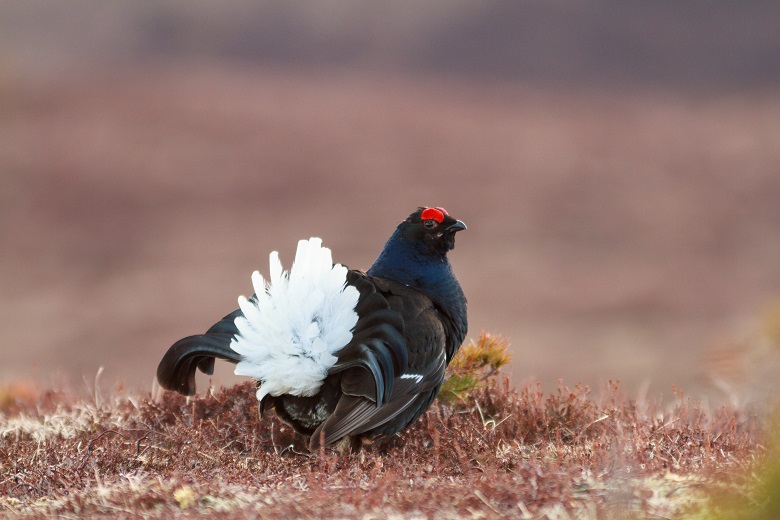People in Scotland who take part in activities such as mountain biking, water sports, angling and wild camping in Scotland’s forests are being urged to think about how their hobby could negatively impact wildlife and the environment.
The call comes from Forestry & Land Scotland (FLS) who today launch a campaign, “Protect Scotland’s Wildlife”, and publish the results of research, to coincide with the start of the main bird breeding and nesting season.
FLS’s campaign aims to raise awareness of the unintended consequences- even harm – that can be caused to wildlife and the environment by people participating in activities in Scotland’s forests and wild places, without taking sufficient care.
The FLS research asked people in Scotland what hobbies and activities they take part in, how often they visit and how aware they are of the potential for their activity to disturb wildlife.
People surveyed were asked if they participate in activities ranging from dog walking, hill walking and water sports (kayak, canoe, paddle boarding, wild swimming) to mountain biking, wild camping, wildlife photography and angling.
The survey found that:
- Nearly 9 in 10 (88%) Scots surveyed, visit one of Scotland’s national forests or a destination managed by FLS to take part in one of these activities.
- Nearly 6 in 10 (59%) of those surveyed*, admitted they’re not aware of the breeding and nesting seasons of birds and other wildlife in the areas they visit.
- And only almost7 in 10 (69%)* “leave FLS forests and destinations as they found them” despite widespread awareness of the Scottish Outdoor Access Code.
- Around 4 in 10 (38%)* said they don’t stick to designated paths and tracks; just over 2 in 5 (41%)* hadn’t considered the impact of lighting fires and nearly half (46%)* don’t think about how much noise they’re making so that they don’t disturb wildlife nor how close they get to wildlife when taking photos (49%)*.
- Almost 4 in 10 people (36%) have witnessed or taken part in behaviour that looking back on it, might have been harmful to wildlife.
Increasingly people are seeking out places that are ‘off the beaten track’ thanks in part to social media influencers, not realising that their hobby can disturb wildlife in the area they visit. For example, birds that nest at the edges of lochs can be easily disturbed by those enjoying water sports, while birds that nest in the treetops can be driven off nests by activity on the ground that’s too close by. Even collecting deadwood off the forest floor for a small campfire, can disturb delicate environments and ecosystems.
Some of the examples that FLS has come across are:
- Several instances of ospreys – both chicks and adults – in the Trossachs becoming tangled in cut fishing line. This has been the suspected cause of nest failure in some cases. One case on Loch Awe and another in Lorne involved an entangled chick that had also wound its nest-mates into the fabric of the nest and all would have died without FLS intervention.
- Disturbance caused to forest raptors such as buzzard, sparrow hawk, red kite and goshawk from an extensive network of unofficial bike tracks through Achray Forest in areas of mature, thinned conifers. There’s a similar scenario in Dunardy Forest nr Lochgilphead where a track passes immediately below an osprey nest tree.
- Disturbance of waterbird species on Loch Morlich, where they now use only a tiny part of the loch, most distant from beach.
- Disturbance of waterbird nests at Loch Sheil and longstanding issues with kayakers, despite floating signs, booms, etcetera to create no paddle zones.
- Pollution of the environment and potentially also watercourses: photographic evidence from Affric where camper van users have poured chemical toilet contents over roadsides verges.
- Accidental grass fire under an osprey nest at Loch Awe caused by wild campers (arriving by canoe/kayak): the birds failed and the nest has never been used since.
- Unofficial, constructed bird hides have appeared in various forests. A [what type?] nest close to Loch Rusky has frequently attracted photographers to get too close. And an osprey nest next to the public road on Loch Awe had the same issues: cars stopping and taking photos caused disturbance.
- Disturbance of Capercaillie ‘leks’ (breeding displays) resulting in The Cairngorms Capercaillie Project taking action against photographers and birdwatchers getting too close to these endangered birds.
Speaking about the campaign launch, Colin Edwards, National Environment Manager, at FLS encouraged people to visit Scotland’s national forests and wild places, but asked people to be mindful of the potential for causing disturbance and harm, when they’re out and about. He said:
“Enjoy yourself in Scotland’s forests and wild places but please be mindful of how your actions impact on birds, animals and sensitive habitats.
“Help us to protect what we’ve got, before it’s gone and always follow the Scottish Outdoor Access Code – ‘leave no trace’, take responsibility and don’t linger if wildlife is disturbed by your presence.
“None of us set out to deliberately cause harm but sometimes it can be thoughtless behaviour that can cause problems that then ripple out.”

